
Infrastructure and defense services provider Parsons (NYSE: PSN) fell short of the market’s revenue expectations in Q2 CY2025, with sales falling 5.2% year on year to $1.58 billion. On the other hand, the company’s outlook for the full year was close to analysts’ estimates with revenue guided to $6.58 billion at the midpoint. Its non-GAAP profit of $0.78 per share was 5.7% above analysts’ consensus estimates.
Is now the time to buy Parsons? Find out by accessing our full research report, it’s free.
Parsons (PSN) Q2 CY2025 Highlights:
- Revenue: $1.58 billion vs analyst estimates of $1.60 billion (5.2% year-on-year decline, 0.9% miss)
- Adjusted EPS: $0.78 vs analyst estimates of $0.74 (5.7% beat)
- Adjusted EBITDA: $149.1 million vs analyst estimates of $146.3 million (9.4% margin, 1.9% beat)
- The company dropped its revenue guidance for the full year to $6.58 billion at the midpoint from $7.25 billion, a 9.2% decrease
- EBITDA guidance for the full year is $615 million at the midpoint, in line with analyst expectations
- Operating Margin: 6%, in line with the same quarter last year
- Free Cash Flow Margin: 9.5%, similar to the same quarter last year
- Backlog: $8.9 billion at quarter end, in line with the same quarter last year
- Market Capitalization: $8.23 billion
“We are pleased with our second quarter results as we delivered strong total and organic revenue growth across our core business, 40 basis points of margin expansion and exceptional free cash flow. In addition, we continued to leverage our balance sheet to close another strategic accretive acquisition,” said Carey Smith, chair, president and chief executive officer.
Company Overview
Delivering aerospace technology during the Cold War-era, Parsons (NYSE: PSN) offers engineering, construction, and cybersecurity solutions for the infrastructure and defense sectors.
Revenue Growth
Examining a company’s long-term performance can provide clues about its quality. Any business can experience short-term success, but top-performing ones enjoy sustained growth for years. Over the last five years, Parsons grew its sales at an impressive 10.7% compounded annual growth rate. Its growth beat the average industrials company and shows its offerings resonate with customers, a helpful starting point for our analysis.
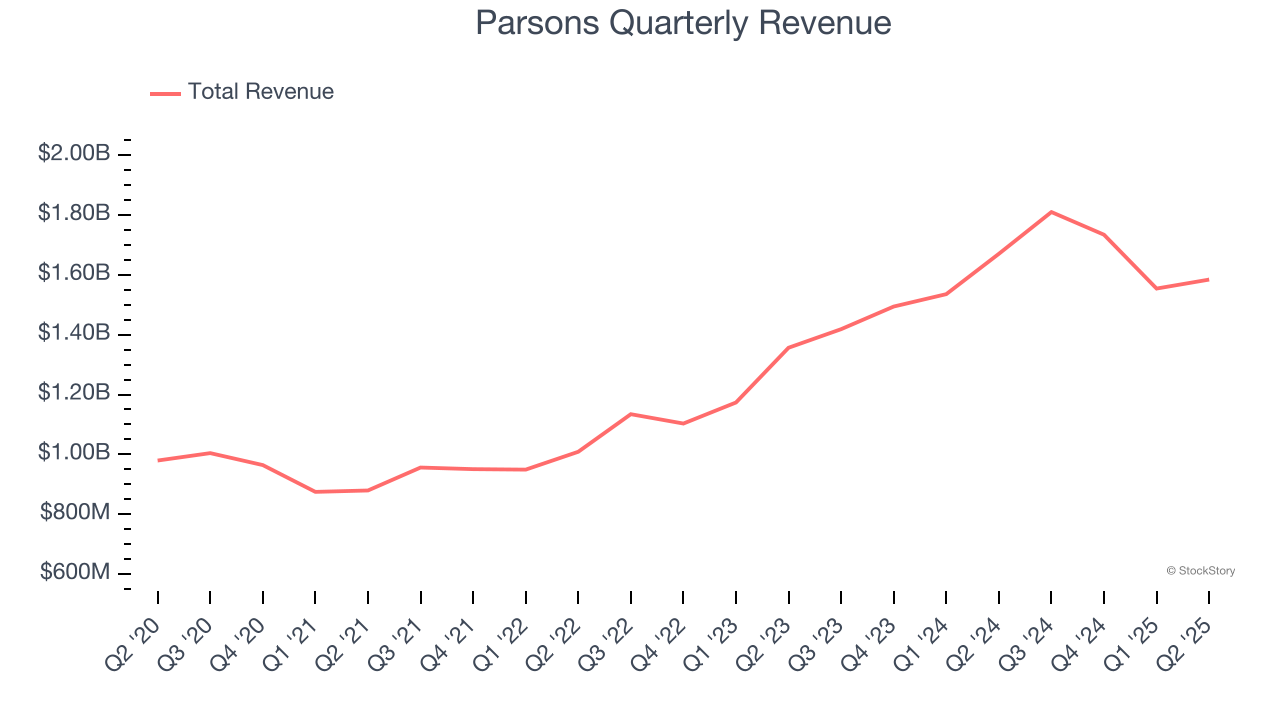
Long-term growth is the most important, but within industrials, a half-decade historical view may miss new industry trends or demand cycles. Parsons’s annualized revenue growth of 18.4% over the last two years is above its five-year trend, suggesting its demand was strong and recently accelerated. 
Parsons also reports its backlog, or the value of its outstanding orders that have not yet been executed or delivered. Parsons’s backlog reached $8.9 billion in the latest quarter and averaged 3% year-on-year growth over the last two years. Because this number is lower than its revenue growth, we can see the company fulfilled orders at a faster rate than it added new orders to the backlog. This implies Parsons was operating efficiently but raises questions about the health of its sales pipeline. 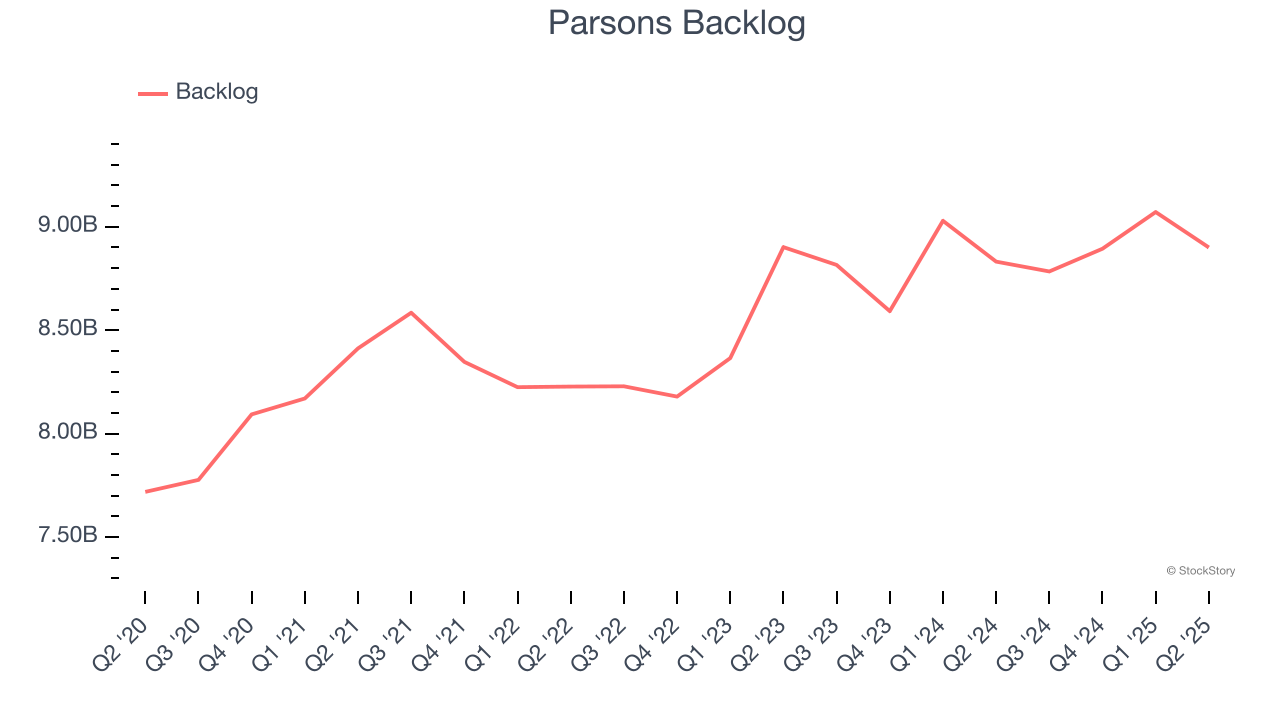
This quarter, Parsons missed Wall Street’s estimates and reported a rather uninspiring 5.2% year-on-year revenue decline, generating $1.58 billion of revenue.
Looking ahead, sell-side analysts expect revenue to remain flat over the next 12 months, a deceleration versus the last two years. This projection doesn't excite us and suggests its products and services will face some demand challenges. At least the company is tracking well in other measures of financial health.
Today’s young investors won’t have read the timeless lessons in Gorilla Game: Picking Winners In High Technology because it was written more than 20 years ago when Microsoft and Apple were first establishing their supremacy. But if we apply the same principles, then enterprise software stocks leveraging their own generative AI capabilities may well be the Gorillas of the future. So, in that spirit, we are excited to present our Special Free Report on a profitable, fast-growing enterprise software stock that is already riding the automation wave and looking to catch the generative AI next.
Operating Margin
Parsons was profitable over the last five years but held back by its large cost base. Its average operating margin of 5.4% was weak for an industrials business.
On the plus side, Parsons’s operating margin rose by 2.2 percentage points over the last five years, as its sales growth gave it operating leverage.
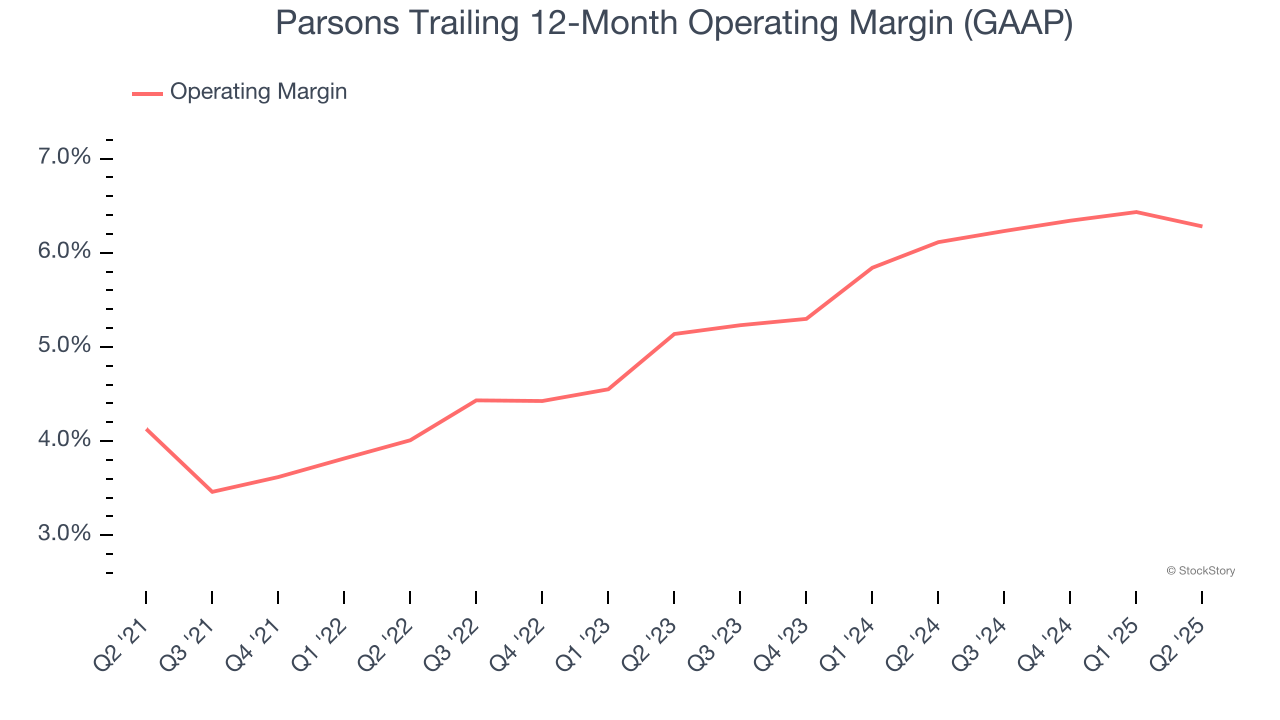
This quarter, Parsons generated an operating margin profit margin of 6%, in line with the same quarter last year. This indicates the company’s overall cost structure has been relatively stable.
Earnings Per Share
Revenue trends explain a company’s historical growth, but the long-term change in earnings per share (EPS) points to the profitability of that growth – for example, a company could inflate its sales through excessive spending on advertising and promotions.
Parsons’s remarkable 12.4% annual EPS growth over the last five years aligns with its revenue performance. This tells us its incremental sales were profitable.
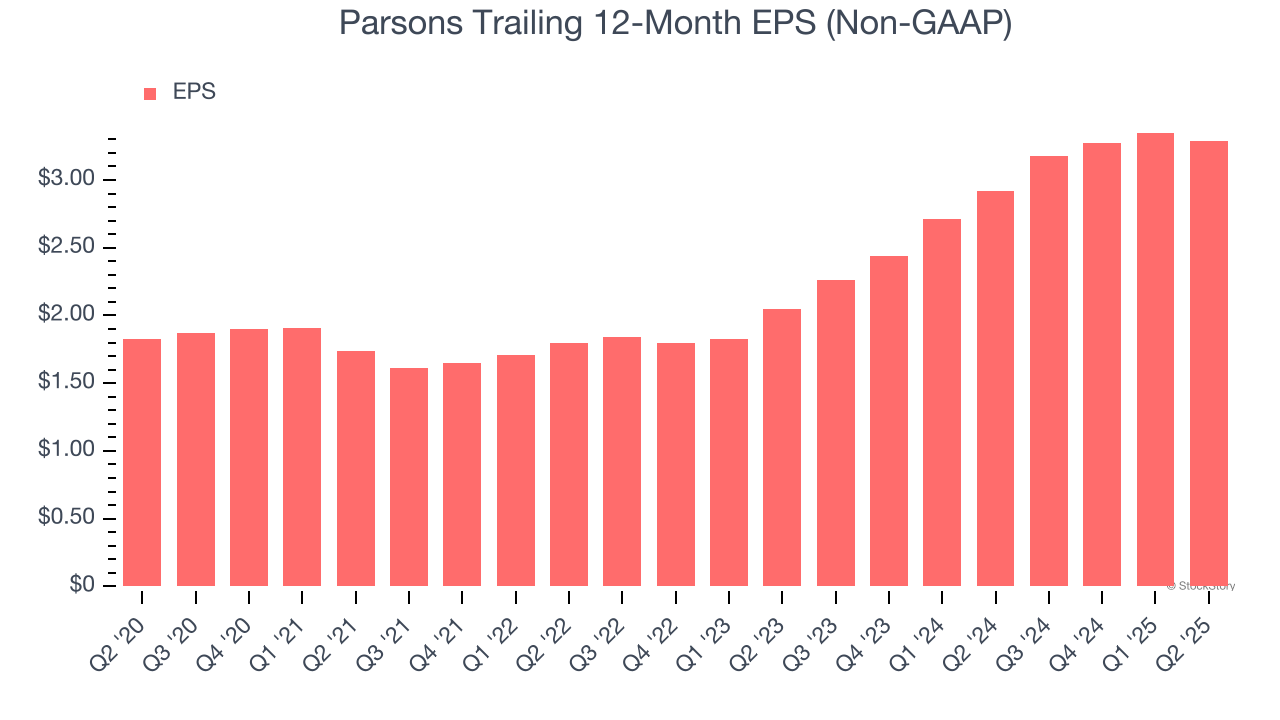
Like with revenue, we analyze EPS over a shorter period to see if we are missing a change in the business.
Parsons’s two-year annual EPS growth of 26.7% was fantastic and topped its 18.4% two-year revenue growth.
We can take a deeper look into Parsons’s earnings to better understand the drivers of its performance. A two-year view shows that Parsons has repurchased its stock, shrinking its share count by 5.7%. This tells us its EPS outperformed its revenue not because of increased operational efficiency but financial engineering, as buybacks boost per share earnings. 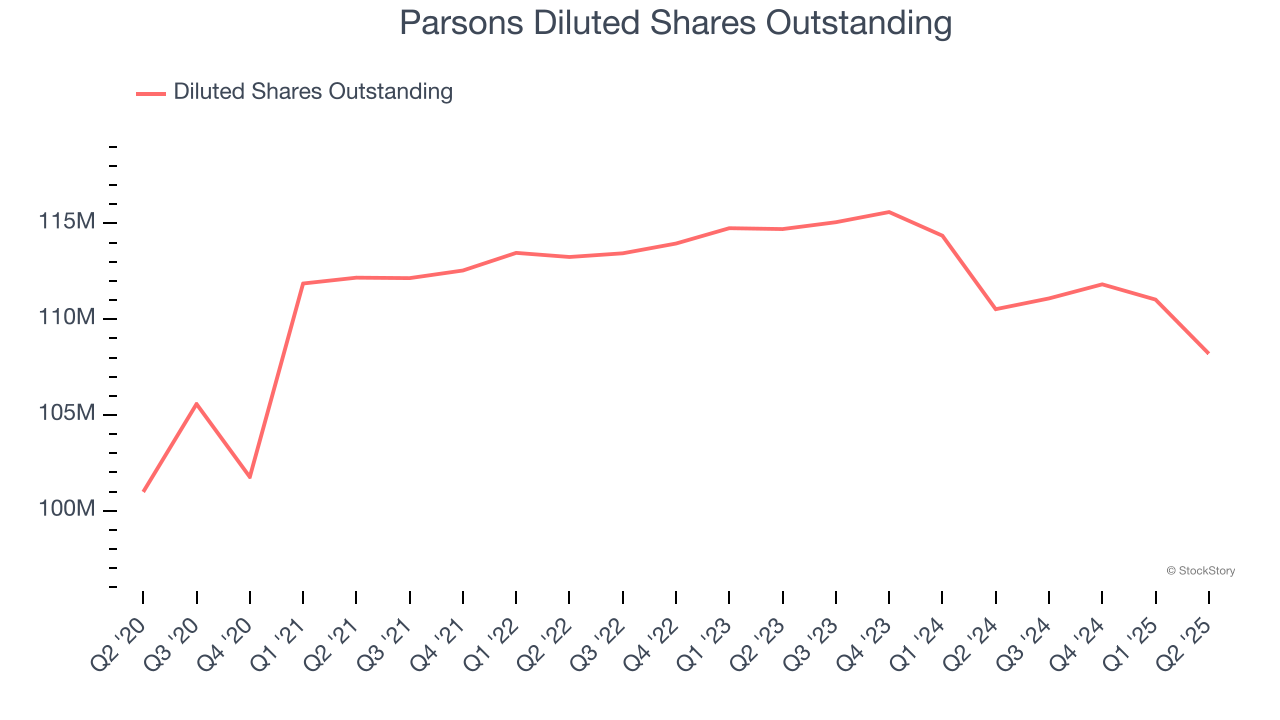
In Q2, Parsons reported adjusted EPS at $0.78, down from $0.84 in the same quarter last year. Despite falling year on year, this print beat analysts’ estimates by 5.7%. Over the next 12 months, Wall Street expects Parsons’s full-year EPS of $3.29 to stay about the same.
Key Takeaways from Parsons’s Q2 Results
It was encouraging to see Parsons beat analysts’ EBITDA expectations this quarter. We were also happy its EPS outperformed Wall Street’s estimates. On the other hand, its backlog missed and its revenue fell slightly short of Wall Street’s estimates. Overall, this was a weaker quarter. The stock traded down 5.7% to $72.60 immediately after reporting.
Parsons underperformed this quarter, but does that create an opportunity to invest right now? What happened in the latest quarter matters, but not as much as longer-term business quality and valuation, when deciding whether to invest in this stock. We cover that in our actionable full research report which you can read here, it’s free.






